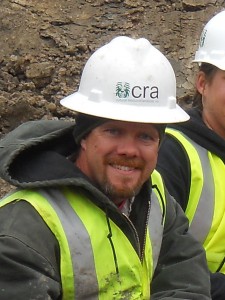Food, Community, and Archaeology in Roxbury, Massachusetts
by Miles Shugar How did a failed 1970s highway project in the heart of Boston,…
Over the coming months, we’ll be bringing you entertaining interviews with a diverse array of your fellow SHA members. Meet a member for the first time or learn something about a colleague that you never knew before. This blog series also offers current members an opportunity to share their thoughts on why SHA membership is important (Camaraderie? Professional service? Exchange of ideas in conference rooms and beyond? You tell us!). If you would like to be an interviewee, please email the Membership Committee Social Media Liaisons Eleanor Breen (ebreen@mountvernon.org) or Kim Pyszka (kpyszka@aum.edu).
 An Interview with Paul Avery, Principal Investigator, Cultural Resource Analysts, Inc.
An Interview with Paul Avery, Principal Investigator, Cultural Resource Analysts, Inc.
Who influenced your decision to become an archaeologist?
I have had many influences through the years. The first was a gentleman named Ed Reed, who was the Superintendent of the New Echota State Historic Site in Calhoun, Georgia where I grew up. He was a family friend and spent a lot of time showing me the place. My first actual exposure to archaeology was at Jacksonville State University where I did my field school. It was run by Chris Hill, who was a fine teacher and became a good friend. He and I spent many days in the lab discussing the science and business of archaeology. But I would say that the biggest influence on my career was Charles Faulkner at the University of Tennessee. He was my thesis committee chair and he remains someone that I turn to if I get stuck on something. And I can’t leave out Pat Garrow, who I have worked with for several years. He has taught me an amazing amount about the business of archaeology as well as technical aspects.
What is the first site you worked on? What is the last one (or current one)?
The first site that I worked on was called the Blue Hole Site in Calhoun County, Alabama. I can’t recall the site number. It was a Woodland and Mississippian village site located in a pasture next to a deep spring, or blue hole. That was Jacksonville State’s field school in May, 1989. Currently, I’m working on a data recovery at the Perry House (40KN275) in Knox County, Tennessee. This site was the location of a two story log home built in 1799. It was built by George Perry, who owned as many as 17 slaves at one time. We are in the process of excavating several cellars that likely mark the locations of slave cabins, the kitchen cellar, two privies, and numerous other features. The artifact collection is remarkable, with a wide variety of early 19th century decorated ceramics. It is very exciting!
Fieldwork or labwork?
Fieldwork, any time!
If you could go back in time for only 10 seconds – where, when, and why?
December 1864 at the Florence Stockade in Florence, South Carolina. After directing excavations there in 2006, I have been continuing to research the site. There are many questions that could be answered in that 10 seconds that may never be answered any other way!
Why are you a member of SHA?
Membership in the Society is important for the professional historical archaeologist as it gives you access to information on current projects that just wouldn’t be available any other way. It connects you with other professionals and allows for an exchange of information that is critical to improving yourself as an archaeologist.
At what point in your career did you first join SHA?
I joined as a graduate student.
How many years have you been a member (approximately)?
15 years
Which benefit of belonging to SHA do you find the most beneficial?
Access to the lessons learned by my peers through the journal is probably the most beneficial aspect of membership. That and the exchange of ideas that takes place at the conference provide an excellent opportunity to continue learning about the science of archaeology.